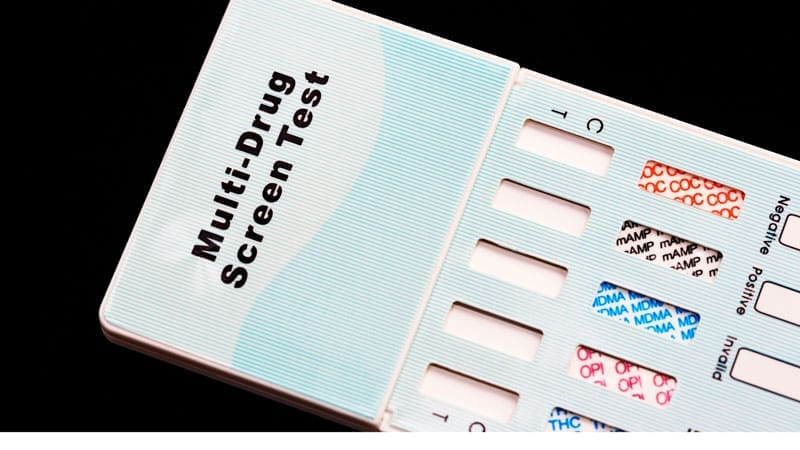Table of Contents
Key Points
- Meth remains detectable in urine for 3-5 days.
- Meth is highly addictive because it increases dopamine levels in the brain, causing a crash and binge cycle of use.
- Meth has a half-life of 6-15 hours.
- The length of time meth remains detectable in urine is influenced by dose, frequency of use, the health of your liver and kidneys, as well as urine pH.
Meth is a highly addictive synthetic stimulant that is taken for its euphoria-inducing properties. Urine tests are just one method that employers or healthcare providers can use to detect meth in the system.
Meth can typically be detected in urine for 3-5 days, although heavier usage might lead to drug detection for up to one week. It’s important to be aware of how long meth stays present in your urine as well as the different factors that could influence the results of your sample.
What is Meth?
Meth, also known as methamphetamine or ice, is a synthetic stimulant drug related to amphetamines that affects the central nervous system.[1] Meth is ingested by smoking, snorting, swallowing, or injecting a powder dissolved in water or alcohol.
Methamphetamine is highly addictive because it affects dopamine levels in the brain, causing these levels to rise immediately after the drug is ingested.[2] A rapid increase in dopamine levels is responsible for the feelings of euphoria that are associated with meth use. Meth must be taken in consecutive doses or binges to maintain the high.
Meth is metabolized quickly, and drug concentrations in the body are highest anywhere from 2-4 hours (if taken orally as a pill) to only minutes after it is administered. Depending on factors such as kidney function and body chemistry, the half-life of meth is 6-15 hours.
Why is Urine Used to Test for Meth?

Urine testing is the least expensive and most common type of drug screening test used to detect meth. The urine is analyzed in a lab where it is screened for meth or methamphetamine metabolites, which are biomarkers left in the body after the drug has metabolized in the liver and kidneys.
The urine sample may be given at work, at a hospital, at a doctor’s office, or at the lab. Depending on the circumstances, you may be able to collect your urine sample at home.
How Long Does Meth Stay in Your Urine?
Meth can be detected in your urine from 2-5 hours after ingestion. In most cases, meth is detectable in urine for 3-5 days after it was last ingested. If you use meth frequently or at high doses, the drug can be detected in urine for up to one week.
However, if you have a well-functioning liver and kidneys, it can take less time for meth to leave your system. Urine screening is just one method that can be used to test for the presence of meth.
Other Tests for Meth
Methamphetamine can also be detected using the following tests:
Blood Test
A blood test for meth is done by collecting blood from the individual for analysis. Meth can show up in a blood test up to 48 hours after ingesting meth. Blood tests are more expensive but give more accurate results than other methods.
Hair Follicle Test
A hair strand test involves cutting a small section of hair from the participant’s head by removing it as close to the scalp as possible. If there isn’t enough hair on the head, hair can be taken from any unshaved part of the body. On average, methamphetamine metabolites remain present in the hair for up to 90 days.
Saliva Test
Saliva tests are administered by placing a swab in the individual’s mouth to collect saliva for analysis. Meth only remains in oral fluid for 1-2 days, although heavy use is associated with higher concentrations of methamphetamine metabolites in saliva for longer periods of time.
Factors That Affect How Long Meth Stays in Urine
Here are some other factors that can influence how long meth stays in your urine:
Dosage and Frequency of Use
The detection of meth in urine is partly dependent on how frequently the drug was ingested and at what dose. For individuals who use less frequently, meth is detectable in urine tests for 3-5 days. Frequent or heavy use of meth can yield positive urine sample results up to an entire week after it was taken last.
Liver and Kidney Function
Meth is first metabolized in the liver and is then excreted by kidneys in the urine. Over time and with heavy use, these metabolites can build up in the liver and kidneys and eventually lead to organ damage. If you have healthy liver and kidney function, it will take less time for the meth to leave your system.
Urine pH
Urine that has a high pH level helps rid the body of detectable meth levels faster than urine that has a low pH. Staying hydrated will also help flush the drug out of your system faster.
Can Some Medications Cause a False Positive?
False positives are rare when it comes to urine drug tests but can occur if you are taking any of the following medications:
- Sudafed (pseudoephedrine)
- Trazodone (atypical antidepressant)
- Bupropion (Wellbutrin XL or Wellbutrin SR)
- Ofloxacin (antibiotic)
If you suspect you may have received a false positive, request a second confirmation screening from the original test provider.
Frequently Asked Questions About Meth.
Below are some of the most frequently asked questions regarding methamphetamine.
Absolute Awakenings Treatment Center Editoral Guideline
At Absolute Awakenings, we take information integrity seriously. We have dedicated our resources to ensure that all content published to our blog is medically sound. As such, all content on our blog has been thoroughly reviewed by a doctorate level clinician such as a Medical Doctor, or Psy.D, so that you can trust all of the data we publish.







